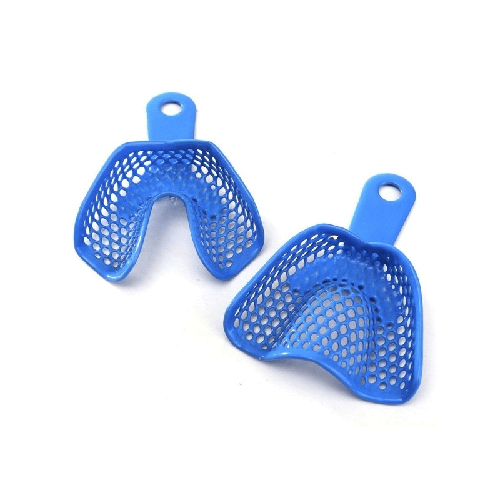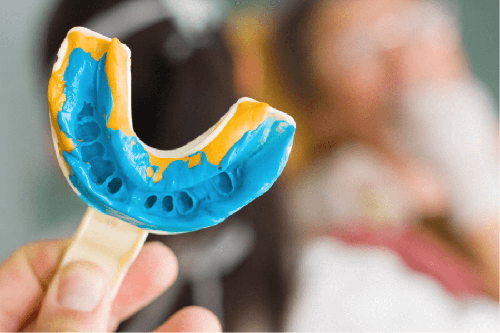A dental impression is a procedure that includes taking a negative copy from the tissues in your mouth for different reasons. Once the dentist gets that imprint, he can completely recreate the situation in your mouth by getting a mold from the impression. It is usually taken with a special material that is placed in a dental tray. These materials have a semi-liquid consistency, and in the mouth transform in a hard form. Dentists usually use them in restorative dentistry (crowns, bridges, implants, veneers), orthodontics, prosthodontics, oral surgery and more.
Types:
There are several classifications of impressions that divide them based on different factors. There are also numerous dental materials used for impressions and can be elastic or rigid.
One of those is the one that classifies them in partial and complete. The complete impressions can be taken from the maxilla, mandible or an occlusion impression that registers the bite. These are all detailed, and provide a look of the teeth, dental arches and several other features including the soft tissues. Very commonly used, especially for restorations and diagnostics. The partial type only provides a look from one single segment in the jaw. It can also be done from the maxilla, mandible or a bite registration. Mostly used for crowns, bridges.


The second type divides the impressions into one-step technique, two-step technique, and a custom tray impression. As the names suggest, the first one is done in a single step, the second one in two steps. The custom tray technique is a variation of the two-step, and it requires an additional visit to the dentist. The custom-tray method results with a special impression tray. For the first step, the dentist uses a custom tray and an elastic material. That impression is sent to the lab, where they create the custom tray. This technique is used in the production of dentures, large precise restorations, and all procedures that require great precision.


Another classification divides impressions in static and functional, depending on the function of the surrounding tissues at the time when the impression is taken. The static is used for crowns and bridges. The functional is used for dentures and large restorations.
Uses:
Impressions are used in all fields of dentistry. They can be used for diagnostics, planning, treatment. The find regular use in the prosthodontic branch. A dentist simply can’t make a restoration without getting an impression. All types of restorations including crowns, bridges, veneers, implants are based on the mold gotten from the impression. They are a huge help in the field of orthodontics. Dentists and technicians use them to set up a diagnosis, create a treatment plan and mobile appliances. Impressions are also used in maxillofacial surgery when the patient needs special prosthetics.
Procedure:
The procedure is easy and only takes a short time. Dentists use special trays that fit the shape of the maxilla or mandible. First, they place the material in the tray, then put the tray in your mouth. Some patient might feel a vomiting reflex. You shouldn’t be scared at all. The tray will stay in your mouth for several minutes, depending on the material.




